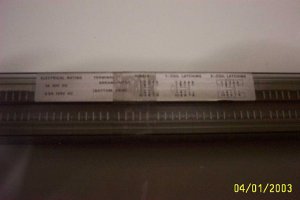quick question: is there a way to throw a latching relay the other way without reversing the polarity on the coil?
model is communications instruments, inc. #MQP17L DPDT [12v dc on the coil].
[bloody details follow]
I have been unable to find any data sheets on this animal.
I have a simplistic wiring sticker that is smaller than a postage stamp, and it shows 1 coil and 2 coil wiring. I have been unable to get the 2 coil wiring to make any difference than the 1 coil. I am not sure that I can even use 2 coil wiring with this model. I am very confused about what pins 5 & 6 do.
The reason behind all of this is to power trackside signals via the same momentary switch that throws the points [solenoid powered]
Any ideas?
model is communications instruments, inc. #MQP17L DPDT [12v dc on the coil].
[bloody details follow]
I have been unable to find any data sheets on this animal.
I have a simplistic wiring sticker that is smaller than a postage stamp, and it shows 1 coil and 2 coil wiring. I have been unable to get the 2 coil wiring to make any difference than the 1 coil. I am not sure that I can even use 2 coil wiring with this model. I am very confused about what pins 5 & 6 do.
The reason behind all of this is to power trackside signals via the same momentary switch that throws the points [solenoid powered]
Any ideas?


